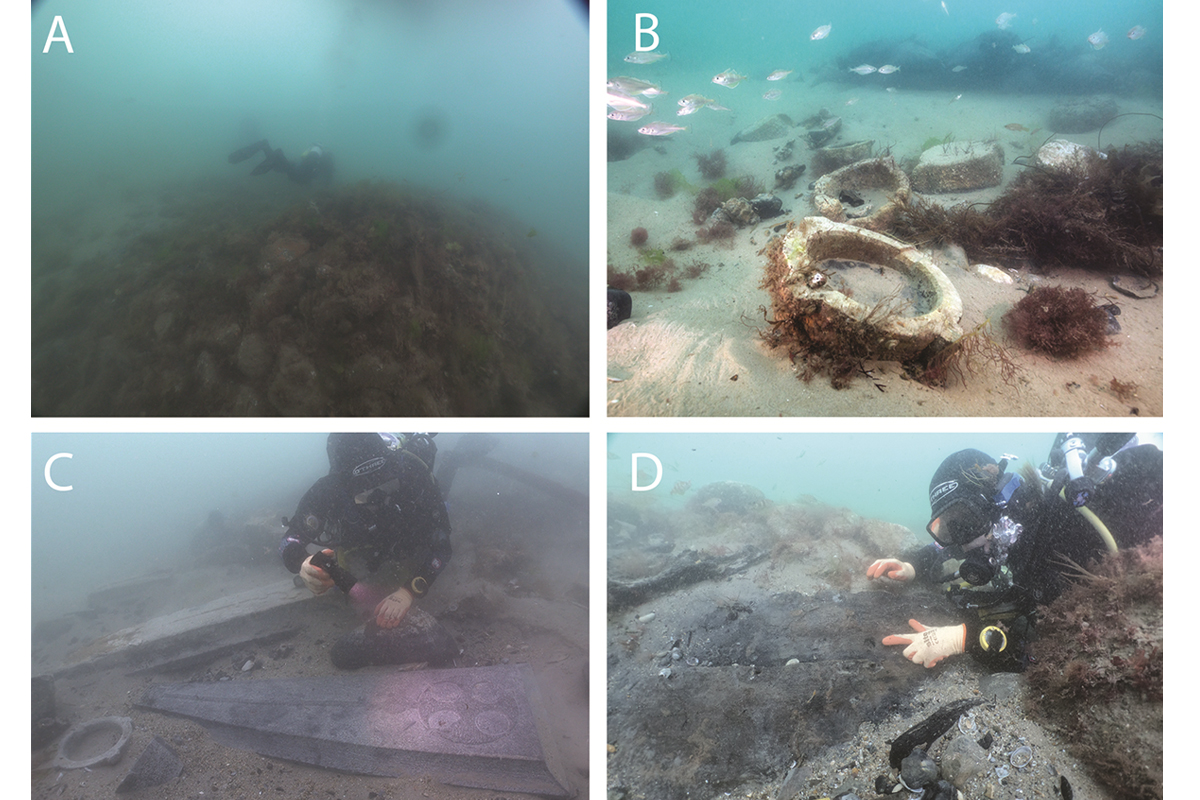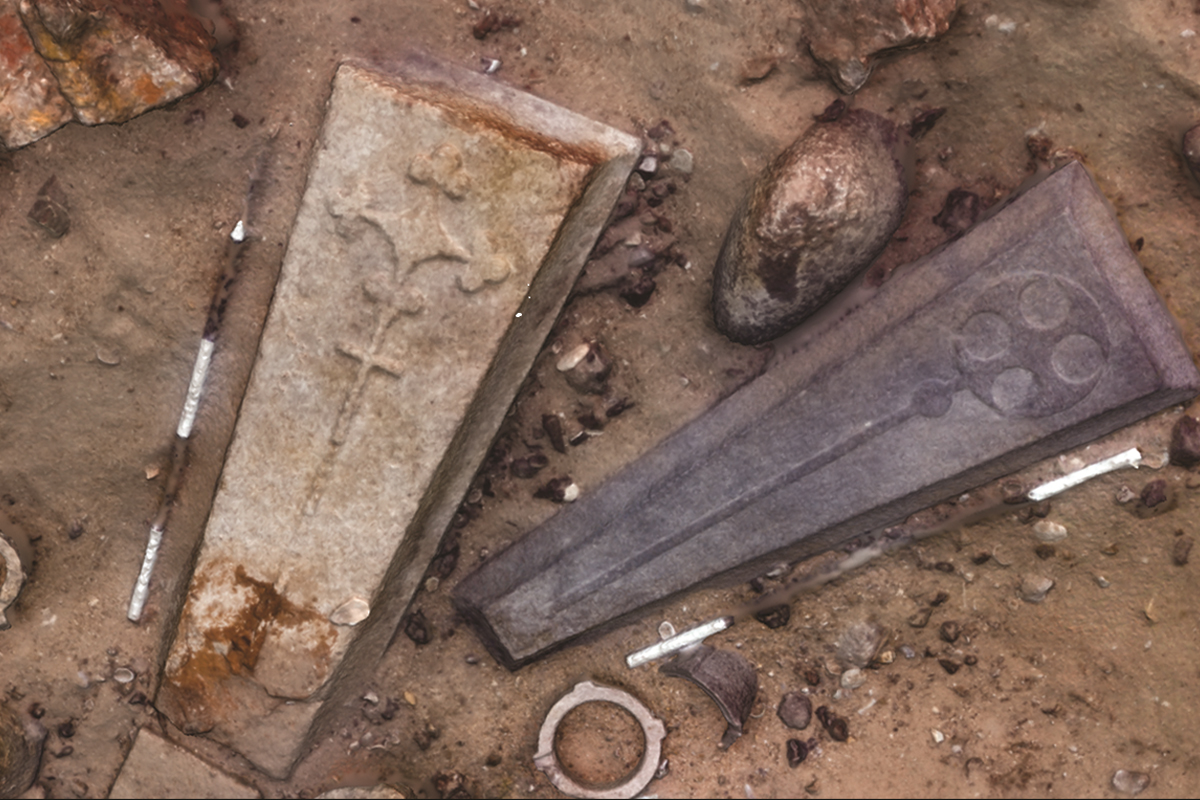A study of a 13th-century shipwreck is shedding new light on the Medieval trade networks that provided valuable stone for the construction of religious monuments.
The ship sank off England’s southern coast while transporting a cargo of Purbeck stone and Marble, both valuable building materials used in large-scale construction projects such as Salisbury Cathedral.
Purbeck stone is a type of coloured limestone mainly found on the Isle of Purbeck. The best known variety is Purbeck Marble, a fossiliferous limestone, that when polished is used for inscriptions, architectural mouldings, columns, slab panels, and flooring.
Tom Cousins from Bournemouth University, said: “Thousands of tons of cargo were shipped daily around the shores and rivers of England during this period.”
However, very little is known about the trade networks that facilitated major construction projects, largely due to the limited traces of archaeological evidence or shipwrecks surviving on the seabed from this period.

The study, published in the journal Antiquity, analysed the Mortar Wreck, one of the only known 13th century shipwrecks in English waters.
According to the study authors: “The ship may have been travelling to a large construction project, or specialist workshops in London, where the polishing of the stone could take place. This indicates large, multi-stage trading networks existed in England facilitating the distribution of Purbeck stone.”
The ship provides evidence for the sourcing, transportation, and working of the stone, in addition to the logistics of 13th century shipping.
“While the loss of the ship would have been devastating at the time, today the Mortar Wreck provides a unique opportunity to investigate a key period in European history,” added Cousins. “By studying the remains of the Mortar Wreck, we can learn more about technology and trade in the thirteenth century, as well as the activities of sailors and traders, their lives and environment.”
Header Image Credit : Antiquity
Sources : Antiquity | https://doi.org/10.15184/aqy.2024.82





